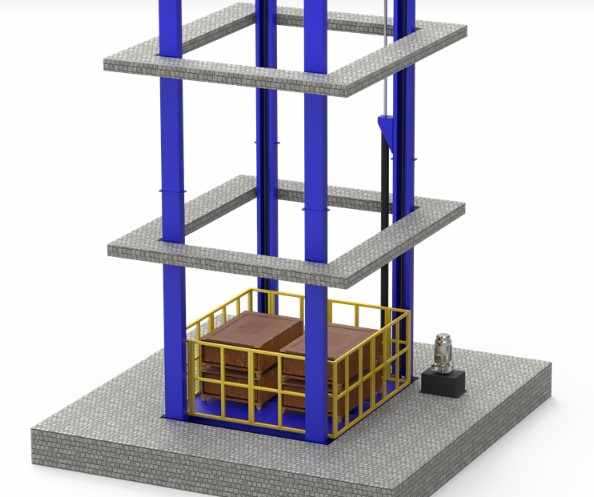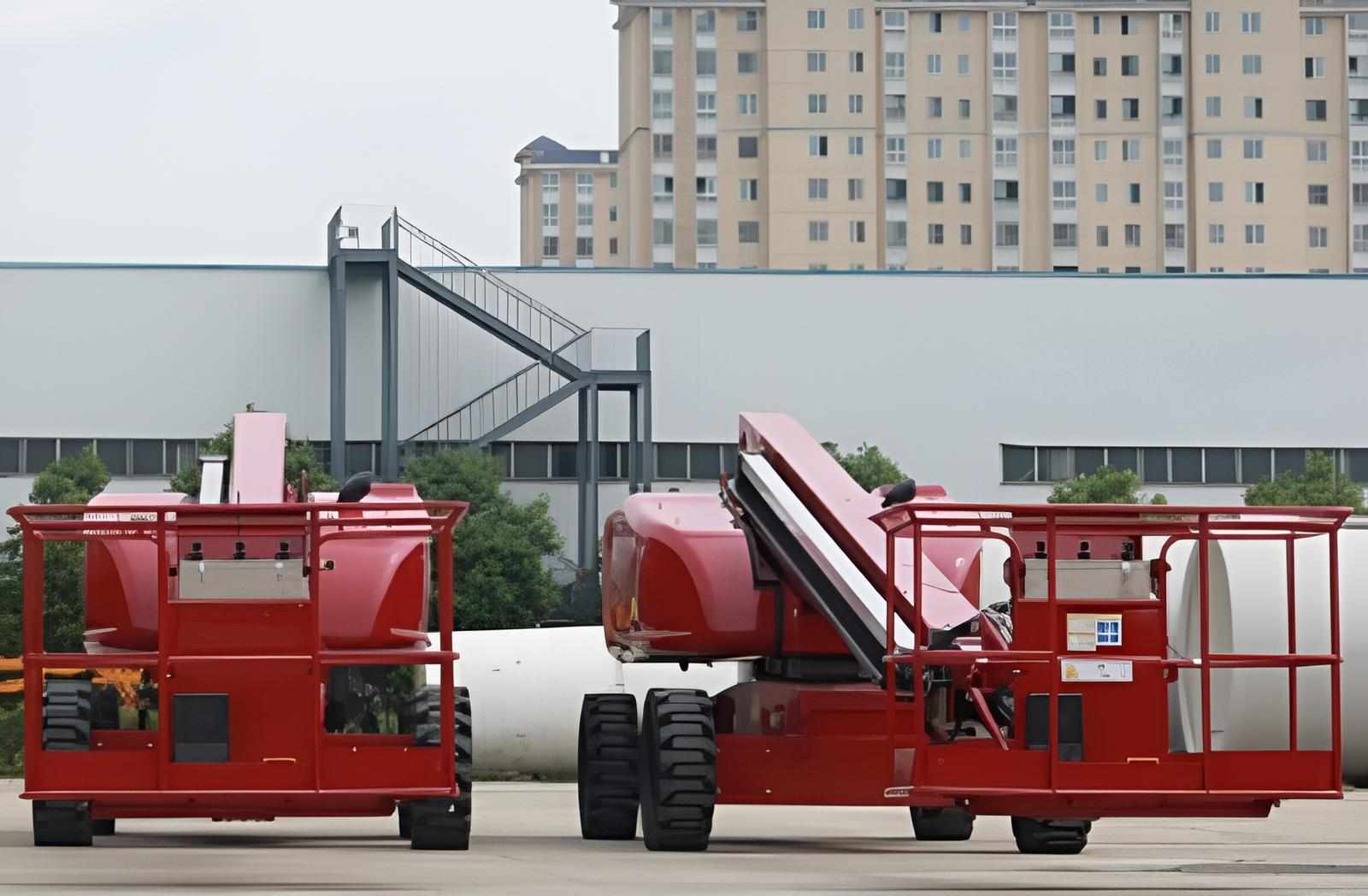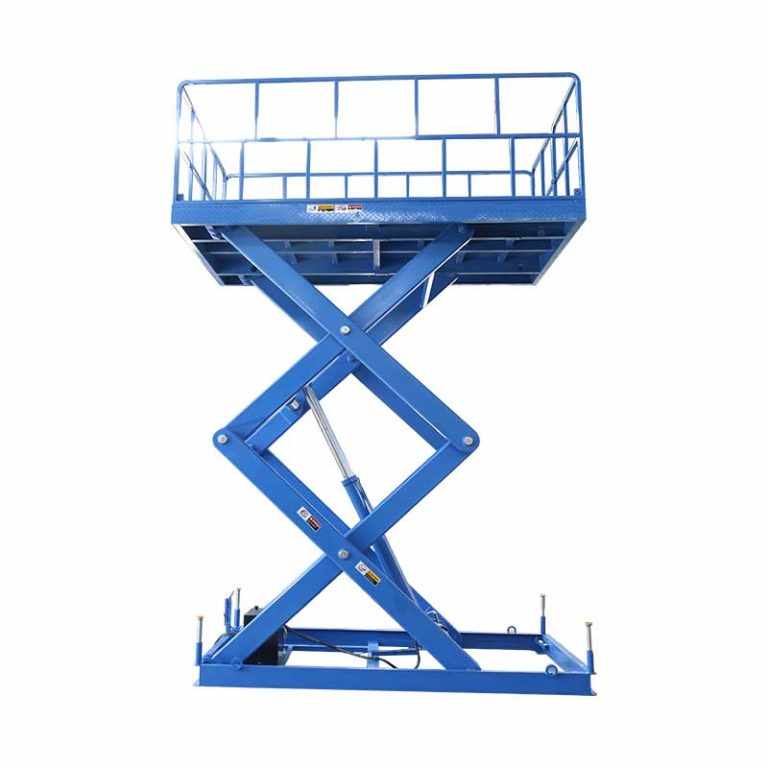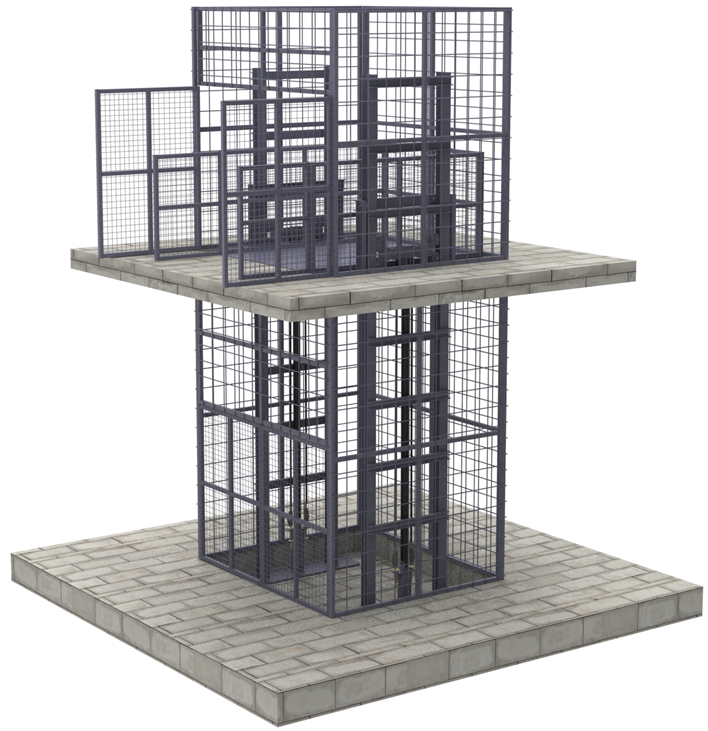
Warehousing and logistics processes are being significantly reformed, precipitated by heightened demands for speed, efficiency, and flexibility. The epicentre of this change is the advanced interfacing of material handling equipment, specifically four-post cargo lifts, into automated systems. As warehouse processes grow in complexity, the requirement for smooth workflow synchronisation as well as high resilience to unexpected disruptions, including natural disasters, remains all-encompassing.
This report discusses technical aspects and strategic benefits of combining four-post cargo lifts with conveyor systems and designing them for harsh environmental conditions, explaining how these innovations lead to future-proof vertical logistics infrastructure.
Strengthening Against Earthquakes
In seismically active areas, the protection of industrial lifts calls for sophisticated engineering to reduce the effect of ground motion.
Base Isolation Bearing Specifications: Base isolators play an important role in decoupling a building from ground movement, greatly lessening the energy transferred during earthquake movement. Different base isolation bearings are used. High Damping Rubber Bearings (HDRB) and Lead Rubber Bearings (LRB) have inherent spring and damping properties. It frequently negates the requirement for external dampers, making them ideal for tight locations. Natural Rubber Bearings (NRB) provide superior linearity but are generally designed to need an independent damper, with more flexibility in the general isolation design.
Dynamic Sway Dampers: For further reduction of excessive movement and vibrations in seismic conditions of industrial four-post cargo lifts, dynamic sway dampers are used. Tuned Mass Dampers (TMDs) are a mass, spring, and damper tuned to a structural frequency, with the mass resonating out of phase to minimise dynamic response and energy dissipation. Fluid Viscous Dampers (FVDs) can enhance base isolation systems by adding velocity-dependent damping, which optimally minimises dynamic displacement (by up to 50%) and associated base shear.
Protecting Against Water Damage
Designs for industrial four-post cargo lifts in flood risk zones must be specialised to serve in flood-prone areas to ensure continued functionality and rapid recovery.
Submersible Motor Designs (IP68 Rating): Submersible motor designs with an IP68 rating are crucial. This rating indicates that the motor is dust ingress protected and water immersion protected against continuous immersion in water. Such motors, available in water-filled or oil-filled configurations, are thus engineered to perform robustly in challenging environments. Their sealed construction ensures continued operation or safe shutdown even in cases of submersion. Catastrophic failure is thus avoided, and resetting becomes faster post-flood.
Corrosion-Resistant Circuit Boards: Electronic components, particularly circuit boards, are highly vulnerable to moisture and corrosive agents. In flood-prone or harsh industrial environments, applying conformal coatings (e.g., Parylene) to circuit boards is essential for unmatched corrosion resistance. These coatings protect against exposure to salt and fresh water, chemicals, gases, and other corrosive fluids, offering low water vapour transmission and excellent thermal/UV stability.
Ensuring Uninterrupted Operation
Strong emergency procedures are essential to ensure safety and reduce disturbance when unexpected incidents happen.
Battery-Backup Descent Systems: During a power failure, battery-backup descent systems are essential for four-post cargo lifts for safety and minimal disruption. They automatically sense loss of power and, with the use of standby battery power, lower the lift to a preselected landing (usually the lowest) and open doors. This avoids the entrapment of people or materials and facilitates a controlled, safe shutdown.
Manual Override Pump Locations: In case of system failures or full power loss outside of battery backup capacity, manual override pumps offer an important backup. Hydraulic hand pumps enable individuals to manually control the lift, generally to return it to a safe position. Four-post cargo lift motors and power units are generally placed on one of the posts.
Conclusion
The capability to merge four-post cargo lifts with conveyor systems and design them for survival in natural disasters is core to the future of vertical logistics. Through the use of sophisticated seismic upgrades, strong flood mitigation measures, and thorough emergency protocols, companies can guarantee that their mission-critical material handling assets continue to function and are safe, even in the event of extreme environmental pressures. This method not only improves productivity and safety but also protects business continuity, setting today's warehouses up for long-term success in an ever-more uncertain environment.
Frequently Asked Questions (FAQs)
1. What's the maximum conveyor alignment tolerance for pallet integration?
Industry standards (ANSI MH30.1) specify ≤3mm deviation. Laser-guided systems such as SICK LiDAR autocorrect above this range, avoiding jams.
2. Can older Four-Post Cargo Lifts retrofit conveyor docking?
Yes, modular kits (such as Demag IntelliDock) provide IO-Link/CAN Bus capability for $4,000–$18,000, although hydraulic lifts might require pump upgrades.
3. How do buffer zones avoid damage throughout lift cycles?
Weight-distribution sensors (such as Load Star systems) reposition loads over >70% bias, while roller decks lock until lifts dock.
4. Do shared power systems endanger equipment failure?
No, regenerative DC bus designs (such as Schneider's EcoStruxure) isolate faults. Redundant circuits keep operations up during outages.
5. What safety measures safeguard employees in integration?
Electromagnetic interlocks shut down lifts if light curtains are broken through, while OSHA 1910.179 requires double emergency stops on buffer platforms.





Write a comment ...